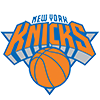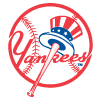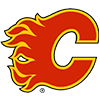Not all prospect progression is linear. That's something that many fans and fantasy players alike forget. We are impatient. We want immediate results. But not every player can transition seamlessly from the minors to the big leagues, even if they were a highly touted prospect. Such appears to be the case for Brendan Rodgers, middle infielder for the Rockies. Rodgers was the third player selected in the 2015 MLB Draft, but has struggled recently, battling a combination of injury, inconsistency and organizational depth ahead of him.
Rodgers spent about a month in the majors last May, and was downright dreadful. He hit .224, fanned 27 times while drawing just four walks in 25 games, and failed to record a single home run or stolen base. He performed well in his return to Triple-A, but that was in the extremely hitter-friendly confines of the Pacific Coast League. Then he got hurt, tearing his labrum in his throwing shoulder and undergoing season-ending surgery. The hiatus from the coronavirus actually could allow him to be healthy when play resumes, but he will face an uphill battle to make the roster. Ryan McMahon is the incumbent at second base, and the Rockies also have Garrett Hampson. Rodgers also has options left, furthering the notion that he will start the season in the minors.
Rodgers could be a decent buy-low candidate because he is no longer considered a "can't miss" prospect. Expectations are tempered. Rodgers could still live up to the hype and
Not all prospect progression is linear. That's something that many fans and fantasy players alike forget. We are impatient. We want immediate results. But not every player can transition seamlessly from the minors to the big leagues, even if they were a highly touted prospect. Such appears to be the case for Brendan Rodgers, middle infielder for the Rockies. Rodgers was the third player selected in the 2015 MLB Draft, but has struggled recently, battling a combination of injury, inconsistency and organizational depth ahead of him.
Rodgers spent about a month in the majors last May, and was downright dreadful. He hit .224, fanned 27 times while drawing just four walks in 25 games, and failed to record a single home run or stolen base. He performed well in his return to Triple-A, but that was in the extremely hitter-friendly confines of the Pacific Coast League. Then he got hurt, tearing his labrum in his throwing shoulder and undergoing season-ending surgery. The hiatus from the coronavirus actually could allow him to be healthy when play resumes, but he will face an uphill battle to make the roster. Ryan McMahon is the incumbent at second base, and the Rockies also have Garrett Hampson. Rodgers also has options left, furthering the notion that he will start the season in the minors.
Rodgers could be a decent buy-low candidate because he is no longer considered a "can't miss" prospect. Expectations are tempered. Rodgers could still live up to the hype and become a star. He's still just 23. Not every prospect can be Juan Soto or Ronald Acuna. Patience, Young Grasshopper. That's not to say Rodgers can't also be a failure. He may never hit 20 home runs in a season, nor steal 20 bases in a season. It's just too early to tell. Sometimes, development is not a straight line.
Here are some more prospect profiles to tide you over during these difficult times.
UPGRADE
CJ Abrams, SS, SD – Abrams raked after being drafted by the Padres. He won the batting title as well as the MVP in the Arizona League. He also swiped 14 bases in 32 games. However, his power has been better than advertised, which has really lifted his prospect status into the upper echelon. In 34 games, mostly in the Arizona League as an 18-year-old, Abrams posted a .647 slugging percentage. If the Padres want to get aggressive, they could start the 19-year-old at High-A once the season resumes. Abrams is fully healed from a minor shoulder ailment, and he could rocket through the system if he continues to show this much promise.
Nick Lodolo, P, CIN – This article has mentioned Lodolo in passing a few times, but let's dive deeper into his prospect profile. A polished college arm who throws strikes, Lodolo did not walk a batter in 18.1 innings in 2019 following his selection in the draft. He fanned 30 batters over that span, which included two starts at Low-A to finish the season. He's 6-foot-6, left-handed, has two stellar off-speed pitches and should be able to add a few ticks to his fastball on the radar gun before he ends up in the big leagues. Once thought to be a future middle of the rotation hurler, Lodolo has the chance to become a No. 2 starter, or even possibly a future ace. There's not much to dislike at this point, and a start at High-A in 2020 could have him advancing quickly.
Francisco Alvarez, C, NYM – Even casual followers know the names of Adley Rutschman and Joey Bart, the top two catching prospects in baseball. But how many have followed the rapid rise of Alvarez, who impressed tremendously as a teenager in 2019? At 17, he more than held his own in both the Gulf Coast League as well as the Appalachian League. Overall, Alvarez hit .312/.407/.510 with seven home runs and 26 RBI in 42 games. He showed patience at the dish along with home run power. Alvarez was six months younger than any hitter in the Appalachian League. Now 18, Alvarez should get his first assignment to full-season ball and should be considered among the best 5-7 catching phenoms in the game.
Luis Garcia, P, HOU – The strikeout numbers jump off the page for Garcia, who fanned an astounding 108 in only 65.2 innings at High-A in 2019. And that was after he struck out 60 in 43 innings at Low-A to begin the season. Garcia will gain much more notoriety if he continues to shine at Double-A in 2020. Garcia was 22 during most of 2019, so perhaps he should have dominated against less experienced, younger competition. Double-A will be the true test of his future path, including whether he can remain a starter or will end up in the bullpen. Garcia was signed for just $20,000 out of Venezuela in 2017, so it looks like the Astros have found yet another diamond in the rough.
CHECK STATUS
Logan Gilbert, P, SEA – Some scouts see Gilbert as a future horse, while others think he will merely be an innings eater. A Stetson alumnus like Jacob deGrom, Gilbert was a first-round selection in the 2018 draft. In 2019, he pitched at three levels, posting a 2.13 ERA and 165:33 K:BB in 135 innings. Gilbert has elite size at 6-6, 225, but not the elite fastball velocity. That said, his superb extension allows his fastball to play up and get on hitters sooner. He has four pitches in total, though none of the off-speed offerings appear to be standout pitches. Nevertheless, Gilbert has found little resistance at every level, including nine starts at Double-A to finish the season. Depending on the length and type of season in 2020, Gilbert could make his debut for the big club this year.
DL Hall, P, BAL – The Orioles have a nice tandem in the minors between Hall, a southpaw, and Grayson Rodriguez, a righty. At 21, Hall appears to be slightly farther ahead of Rodriguez, 20, in terms of development. The former spent 2019 at High-A, while the latter completed an entire season at Low-A. Hall showed standout strikeout ability, fanning 116 batters in just 80.2 innings. Hitters batted a putrid .189 against him. He also allowed just three home runs in 19 outings. However, Hall also walked 54 batters, showing sometimes even he didn't know where the ball was going to end up. This type of wildness can be managed and overcome at the lower levels of the minors, but not as the ascent continues to the higher levels and ultimately the big leagues. Hall will need to harness his command at Double-A, or he could be in store for a rude awakening.
Kyle Isbel, OF, KC – Isbel missed chunks of time due to hamstring and hand injuries, and he also batted just .216 in 52 games at High-A in 2019. On the flip side, he hit five home runs and swiped eight bases over that span, showing a certain level of that power/speed combo. In addition, he hit .315 in the Arizona Fall League, swiped six bases in seven tries and showed an advanced approach at the dish. The Royals also said Isbel was one of the standout players in spring training prior to the hiatus, as he flashed leather, hit a couple home runs and made consistent contact. As a 23-year-old outfielder in an organization largely bereft of talent at that position, Isbel could be fast-tracked to the big leagues with a hot start.
Jared Oliva, OF, PIT – Oliva is another outfielder with a fairly clear path to playing time in his respective organization. The Pirates shipped Starling Marte to Arizona, leaving little in the way of competition for the 24-year-old Oliva in center field. Oliva also shined in the Arizona Fall League, slashing .312/.413/.473 with 11 stolen bases. Speed is Oliva's best trait, as he has amassed more than 30 steals in each of the last two seasons in the minors. However, he is also patient at the dish, and is not completely devoid of pop. With the Pirates in full-on rebuilding mode, Oliva could get a crack at regular at-bats if the season resumes.
DOWNGRADE
Brent Honeywell, P, TB – Any possibility of Honeywell making an appearance for the Rays in 2020 appears limited. He has missed two full seasons with injuries, the majority due to undergoing Tommy John surgery in February, 2018. A fractured elbow suffered during his rehabilitation last June only complicated matters further. He hasn't faced live batters since 2017, and that may not happen in 2020 due to circumstances beyond his control. Once a hot shot 22-year-old who revived the screwball, Honeywell would be 26 at the start of the 2021 season and would not have faced live batters in four years if the 2020 season is scrapped. Even if it's played in a limited capacity, Honeywell would certainly be on an innings limit, and one has to wonder what point in his rehabilitation he is at, as well as how the minor league season would be structured.
Canaan Smith, OF, NYY – Smith profiles as a future designated hitter, as his fielding leaves something to be desired, to put it politely. However, he raked at Low-A in 2019, slashing .307/.405/.465 with 11 home runs, 74 RBI and 16 steals. The home runs and steals are likely to flip at some point soon, but Smith is already 21. The power numbers need to come around in a hurry. Smith hit just .191 in 45 games the prior season in the New York-Penn League, so 2019 represented a complete turnaround. His true production likely lies somewhere in between, which leaves him as a patient hitter with not that many home runs and likely declining speed. His hit tool is above average, but as of now Smith does not present much in the way of fantasy value, especially when looking at the current Yankees outfield along with Jasson Dominguez lurking behind him.
Bryson Stott, SS, PHI – For such a high draft pick last season, Stott doesn't seem like much of a future fantasy asset. Despite being a polished college product, he was not challenged by the Phillies organization at all following his signing. His upside is limited; Stott won't hit .300, he's unlikely to be a big home-run threat despite his size and stroke, and his speed is only average. Stott appears to be more of a solid all-around player, as no one tool or ability jumps out. He actually seems like a watered-down version of an infielder the Phillies already have, Scott Kingery. I'm not saying Stott can't be a contributor, only that his ceiling is low. However, it must be pointed out that he has not yet even played in full-season ball, so this determination could be premature.
Seth Beer, OF/1B, ARI – Did the Diamondbacks get hoodwinked by the Astros? It certainly appears that Houston sold high on Beer, who slashed an abysmal .205/.297/.318 with one home run in 24 games at Double-A following being included as one of four prospects in the Zack Greinke trade. Beer has left-handed power, but almost no speed, and no position on the diamond. As such, he seems like an odd fit for a National League squad, particularly one with several first basemen ahead of him on the depth chart. Beer did hit .315/.375/.452 in the Arizona Fall League, and the above-referenced sample size is small, so there may be hope for Beer just yet. That said, he's going to really have to force Arizona's hand given his other limitations.



























